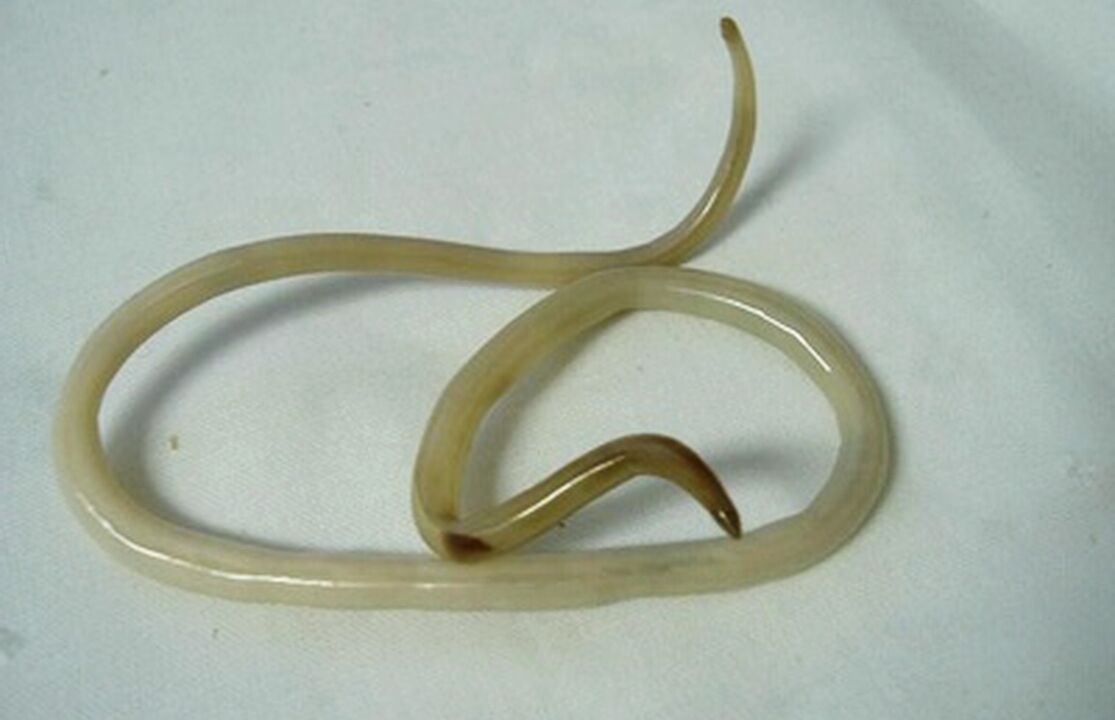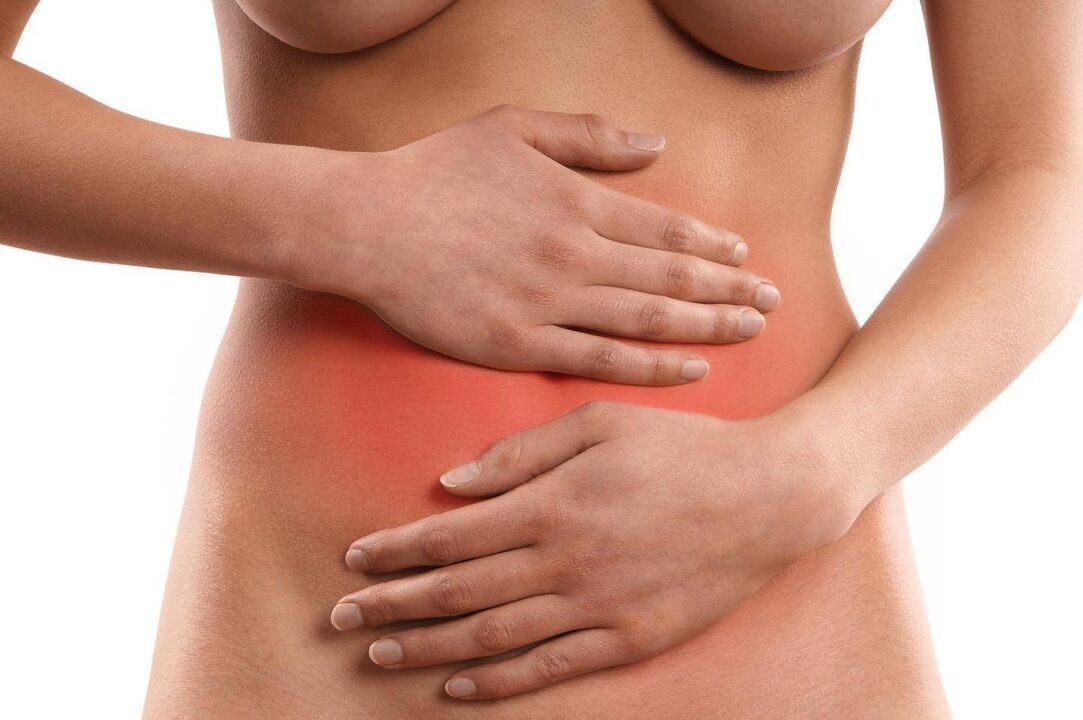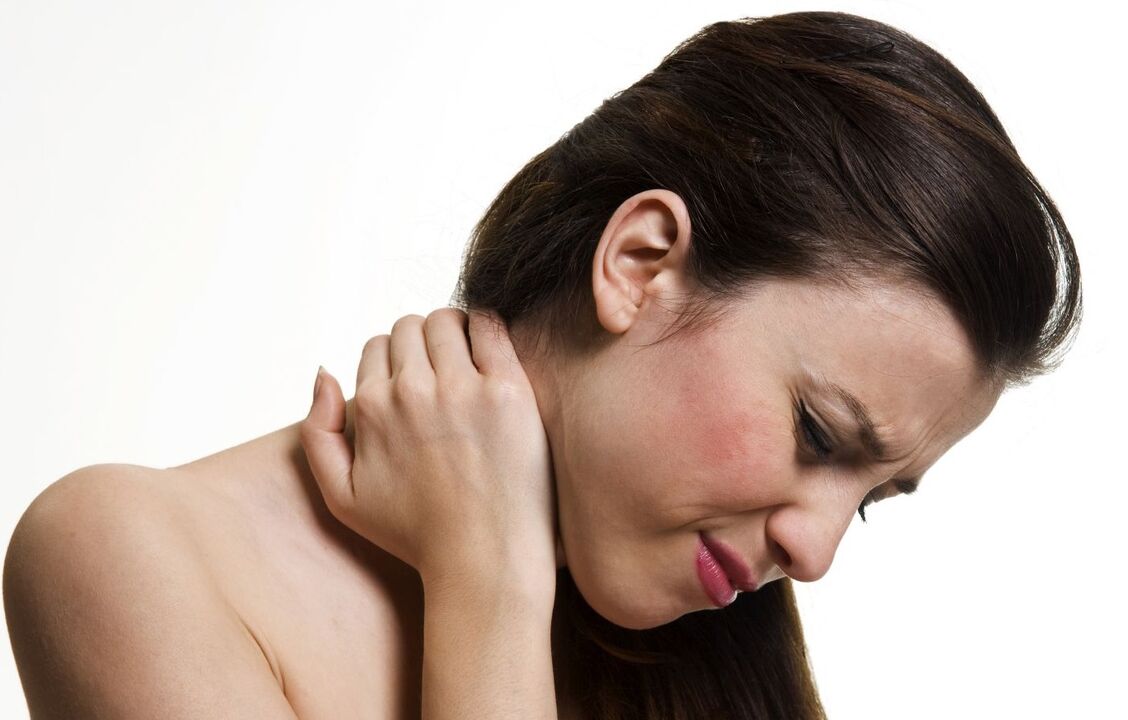Helminthiasis is widespread in the modern world. They are able to affect many organs and tissues, interfering with their work. Moreover, the clinical picture of helminthiasis in humans can be very diverse. What are the symptoms of worms in humans?
According to statistics, about two million people are infected with helminths a year, however, taking into account unregistered cases, this number can increase several times. Infection of children and adolescents is more common.

All helminths can be divided into extraintestinal (tissue) and intestinal. Tissue hosts are animals, humans serve as intermediate hosts for them. In this case, the disease will manifest in different ways, depending on which organ the larva will migrate into. For example, if the larva migrates through the lungs, then the symptoms will mimic pneumonia, if through the intestines - bleeding, inflammatory reaction; migration through the pancreas or bile ducts threatens to block them.
How can you get infected?
What are the ways of infection?
- Over soil and water (geohelminthiasis) - soil contamination occurs when helminth eggs enter it with human or animal feces. If you eat poorly processed root vegetables or water from open tanks, helminth eggs will enter the body. Therefore, all vegetables, fruits, berries should be thoroughly washed with tap water and treated with boiling water. It is forbidden to drink water from open tanks. This route of infection is also possible when people come in contact with animals, especially pets. As a result, children become infected more often by playing with them.
- Contact with an infected person (for example, pinworms). During sleep, the pinworm can crawl out of the anus and lay eggs. The patient has itching. Eggs remain on the hands, under the nails, and if they are not removed from the skin in time, they remain on all objects with which the infected person came into contact.
- Biohelminthiasis - an infection when consuming meat, lard, fish that has not been subjected to sufficient heat treatment or eaten raw.
- Through insect bites.

Helminths are basically a child's problem, because children in the process of getting to know the world put dirty hands and various objects in their mouths, tasting them. This problem will be solved only by the age of three to six, and before that children have a higher risk of infection than adults.
Common signs of infection
What are the signs of helminthiasis?
The symptoms of helminthiasis can be similar to diseases of certain organs: gastrointestinal tract, respiratory system, nervous system, immune system. Helminthiasis can manifest as allergic reactions.
Gastrointestinal disorders
Localization of parasites in the intestines is manifested by symptoms of upset stomach and intestines: the appearance of vomiting, diarrhea or constipation, nausea, bloating, pain in the umbilical region, in the right hypochondrium. Constipation may be associated with mechanical occlusion of the intestinal lumen by helminths. The severity of the symptoms depends on the number of helminths in the body.
Nervous system disorders and general manifestations
They are associated with the release of toxic substances by parasites. The intensity of the manifestation also depends on the number of helminths. Symptoms of nervous system dysfunction are as follows: dizziness, headache, nausea - migraine-like symptoms. Fever, muscle and joint pain are possible. Drowsiness, irritation, sleep disorders, anemia appear.
Allergic manifestations
Allergic manifestations affect the gastrointestinal tract, skin and respiratory system. Itching, difficulty breathing, headache, dizziness, and sometimes vomiting may occur. A burning sensation in the throat, mouth and nose is possible. Nasal congestion and sneezing occur. How to distinguish allergies from helminth infection symptoms? The following anamnestic and laboratory signs should be considered:
- the patient's relatives have no history of allergies;
- the patient had no history of allergic reactions;
- kindergarten attendance;
- you have difficulty breathing every two weeks;
- eosinophils in the blood over 8%;
- lack of effect of antiallergic therapy;
- in the immunoglobulin study, IgE was increased, while the allergen study was negative.
If the patient has these symptoms, allergic manifestations are associated with parasite invasion.
Respiratory dysfunction
When parasites enter the lungs, symptoms similar to pneumonia can occur: cough, fever, hemoptysis. Sore throat may also indicate helminthiasis. When worms migrate from the intestines to the lungs, sore throats can occur. A sore throat is a sign of the presence of a foreign body. There is a dry cough that cannot be stopped. Coughs of this type can occur not only due to the presence of parasites in the throat, but also if they migrate through the nasopharynx. The mucus taken for analysis will help identify worms in the throat.
Decreased immune defense
Due to the fact that helminths deprive the host of vitamins and minerals, and they also have a toxic effect, a decrease in the immune defense is observed. This is manifested by frequent colds or exacerbations of chronic diseases in remission, sore throats.
Damage to the female reproductive system
Violation of the functioning of the reproductive system in women does not always indicate gynecological diseases. Helminths in the female body can also manifest as symptoms of reproductive system dysfunction. By what symptoms can the presence of helminths be suspected in the female genital organs? Defeat of the reproductive system by worms in women is manifested by secretions, an unpleasant odor from the genitals.

In females, thrush can be a sign of helminthiasis. Thrush in women can develop due to reduced immunity and violation of the microflora, which is possible only with helminthiasis. Possible inflammatory diseases of the reproductive system in women. In addition, hair may fall out and nails may peel, and drowsiness and fatigue may occur. All of the above are symptoms of helminthic invasion in women.
How to determine the type of helminth according to symptoms
How to determine which helminths have entered the body? The symptoms are determined by the location of the parasite in the body and its type. When do the first symptoms appear? The first signs of helminthic invasion may appear after two days and six months, depending on the type of helminth.
Pinworms, enterobiasis - you may suspect an invasion of these helminths if you are worried about itching in the anal area, which is becoming more common at night. The itching usually lasts for a few days, then disappears for a while and reappears.
Trichocephaly, schistosomiasis, difilobotriosis - the main symptoms are anemia and vitamin deficiency. Such manifestations are associated with the toxic effects of worms on the intestines and the development of dysbiosis.
Worms - in the initial phase of roundworm infection, weakness, cough, there may be blood in the sputum, fever, suffocation is possible (with a large number of parasites). The level of eosinophils in the blood test increases and allergic reactions occur. At a later stage, the functions of the gastrointestinal tract are disturbed: proteins are not digested, there is a strong weight loss.

Trichinosis - worms are localized in the muscles. In the initial phase, the disease is manifested by nausea, vomiting and disturbed appetite. In the next stage, helminths are localized in the muscles and cause muscle pain, eyelid swelling, fever and skin rash. Furthermore, there is an apparent recovery, but the worms are in the muscles. Parasites cause dense lesions in the muscles.
Fascioliasis, opisthorchiasis - it is possible to suspect the invasion of these parasites if there is jaundice of the skin, enlargement of the liver, spleen, inflammation of the pancreas, dysfunction of the gastrointestinal tract.
Strongyloidiasis - manifests itself as symptoms that indicate biliary tract dysfunction, dyspepsia and allergies.
Helminthiasis test
When should you seek help from a specialist? Positive answers to the following questions will help diagnose the presence of helminths in the body with a high degree of probability:
- itching in the anal area;
- nausea, vomiting;
- constipation or diarrhea;
- allergic manifestations;
- skin rash;
- enlarged lymph nodes;
- frequent headaches, dizziness;
- restless sleep;
- there is bitterness in the mouth;
- fatigue, drowsiness;
- abdominal pain;
- yellowing of the skin;
- the family has children who go to kindergarten;
- pain in muscles and joints, unprovoked;
- periodic increase in body temperature;
- there are animals in the house;
- consuming insufficiently heat-treated meat, fat or fish;
- weight loss;
- use of unwashed vegetables and fruits that have not been previously treated with boiling water.
The more positive responses, the greater the risk of helminths in the body. If there are seven positive answers, then there is a probability of the presence of helminths, if there are more than fifteen, then the probability of the presence of helminths in the body is very high.
Diagnosis
What methods of diagnosing parasites in the body are used?
- Feces on worm eggs.
- Scraping from the anus.
- Scraping for enterobiosis.
- Complete blood count (increased eosinophil levels).
- Vaginal scraping in women.
- Blood test for giardiasis.
- Antibody testing by serological methods; when can antibodies be found in the body? Twenty-one or more days after worm infestation.
- Study of operative material (for echinococcosis).
- Lymph node biopsy (cysticercosis).
- Muscle biopsy - trichinosis.
Treatment
For the treatment of helminthiasis there are tablets of narrow and broad spectrum of action. Treatment of a particular type of helminth must be done with certain medications. The tablets are prescribed only by a doctor after all examinations, because anthelmintic tablets have a toxic effect on the body. Therefore, the doctor will choose the necessary treatment regimen and duration, taking into account age and weight.
The following tablets are often used to treat helminthiasis:
- mebendazole-containing drugs are suitable for the treatment of trichocephaly;
- tablets containing Levamisole - used for ascariasis, enterobiasis, trichostrongylosis, strongyloidiasis.
In advanced cases, pills may not help, then surgical treatment is used.
























